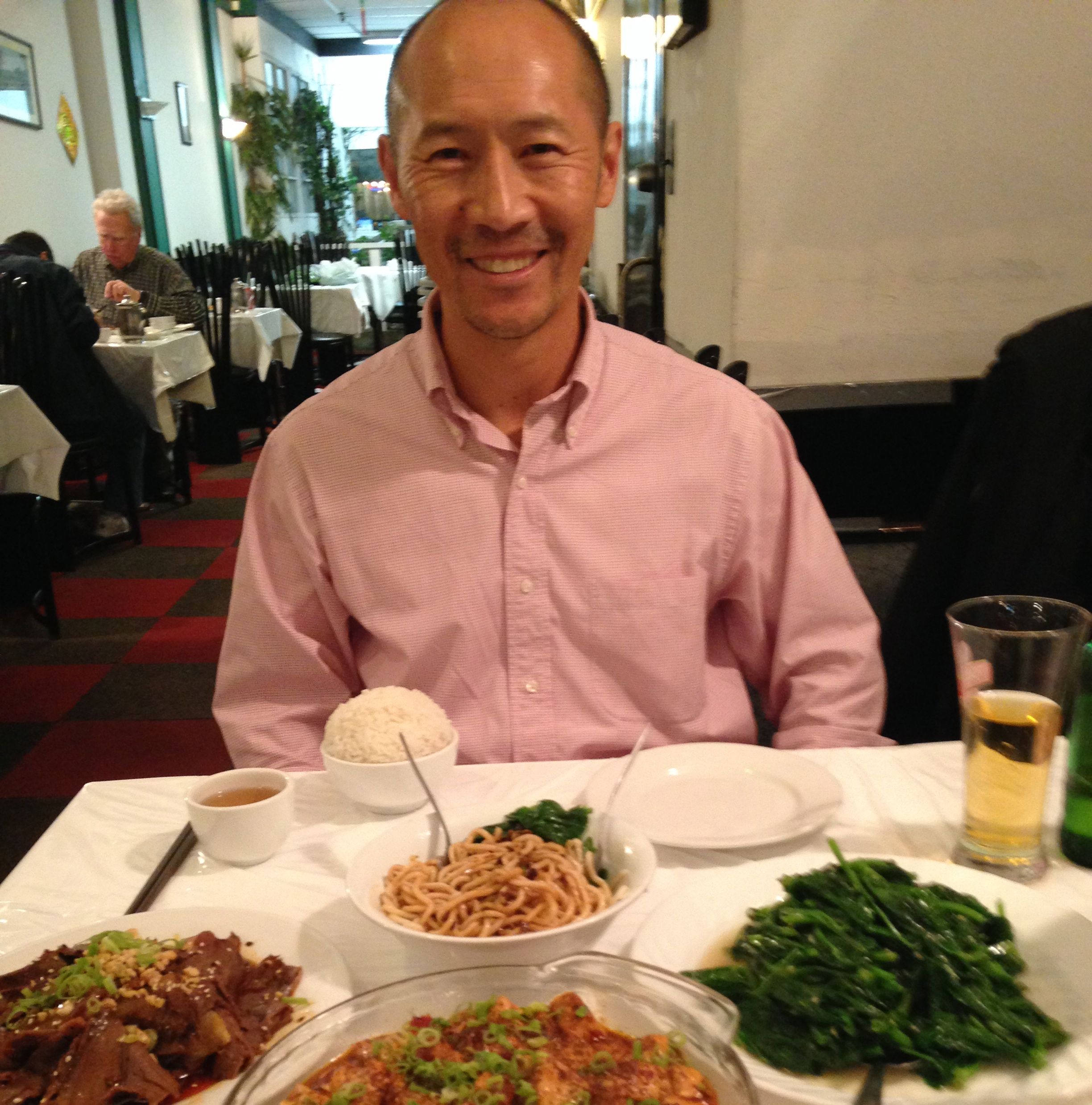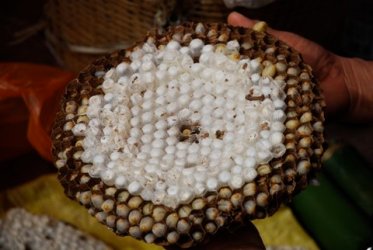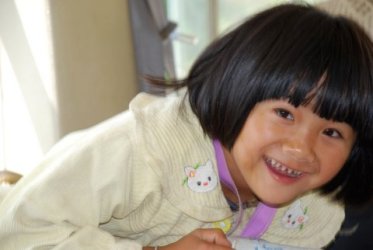30 kilometers in 3 days – that was the goal of the hike through Southern Yunnan province, China. The lush, and pristine tropical rainforests of this area are popular amongst local Chinese. Many of the local people are non-Han (non-Chinese); ethnic tribesfolk. When I met my guide Ai Ni Pa (Sam) of the Bulang tribe, he was no exception. We met in the city of Jinhong; his reception was warm and he was excited to start the journey.
We took a local bus from Jinhong to the town of Xiding, two and a half hours away, where we began our hike. The minibus seating 24 people took us over precarious dirt roads. I peered out the window of the bus as we slowed down around some roads that were washed away by the heavy rains in previous weeks. I marveled at how adept the bus driver was in maneuvering this vehicle through the maze of roads and how non-plussed the other passengers were on the minibus.
We arrived safely in Xiding, and visited a local market for supplies. The local tribes would travel on foot up and down hills for several days to bring their food to the market to sell. The colours and sounds were a feast for the senses. Small birds – could be pigeon or could be quail – marinated and dipped in spicy chilli powder were skewered and grilled.
There was a plethora of vegetables I’d never seen before; long root like vegetables which reminded me of beansprouts but a foot to two feet long tasting mildly of ginger.
I saw a cucumber-like vegetable married to cactus leaves, and tree grubs that grew in the heart of bamboo and honeycomb.
Sam told me the bamboo grubs were a delicacy among the locals! He explained the people of Yunnan like their food spicy and use a lot of dried red chilies when cooking. The chilies gave everything just enough of a bite to enhance all the inherent flavours of the food. Just the way I like it!
We began our hike from Xiding Township and passed tea and sugarcane plantations, up and down mountaintops and through lush scenery. Our trek ended late evening after 13 kilometers. We settled in the traditional Bulang village of Zhanglang. We climbed the bamboo steps to reach the elevated living quarters of our host. We were greeted and entered the abode consisting of earthen floor shared with storage items and live chicken and pigs. The living quarters consisted of a living room, doubled as a kitchen where we would sleep and one bedroom where our host resided. There was access to water from the lone tap on the bamboo patio. Within the family gathering, the children giggled and watched my every move – I was the object of their curiosity.
They don’t get many Han in these parts, our host explained. And as the fire roared in the kitchen, Sam made a delectable meal with the supplies we brought with us from Xiding.
After a restful sleep, the following morning we hiked uphill to visit a large mysterious Banyan tree. Here, Sam explained to me that the Bulang believe that the spirit lives in all objects, including stone and trees. The forest was lush with these ancient trees, and as we hiked along an old pilgrim’s path and I paid homage to the stone shrine, I felt the peace of the trees. I could feel the spirits myself and heard their whispers from the trees. Or was that just the wind?
That day we hiked fifteen kilometers. We passed through many ride paddies as we climbed the steppes. We also travelled through the Pu Erh tea plantations where local women picked tea leaves, carrying bamboo baskets on their back. It felt like hallowed ground since the world’s best Pu Erh tea are grown here. As we reached the next village Mohang, Sam pointed out the spirit gates at the entrance to the village. All Bulang villages have a spirit gate to welcome the helpful spirits.
 Mohang was where Sam lived. He welcomed me into his home where we dropped our sacks and supplies. And he encouraged me to wander and explore the village. There were more houses here, perched on the mountainside.
Mohang was where Sam lived. He welcomed me into his home where we dropped our sacks and supplies. And he encouraged me to wander and explore the village. There were more houses here, perched on the mountainside.
Water buffalo and very large black pigs wandered the streets alongside me.
Even in this relatively small village, I still managed to get lost during a sudden downpour. Thankfully, everyone knows his or her neighbours, and a local youngster showed me back to Sam’s home.
Next morning we continued our hike. Sam pointed out a thick rope knotted at the bottom and elevated well over thirty feet by a wooden platform. During festivals, the young men in their traditional garb swing on the ropes as high as they can to impress the women with their physical prowess!
This last day was a much easier journey. We stopped by beautiful waterfalls and continued onward to the Akha village in Bada. Hiking through the dense tropical and sub tropical mountain forest was a trek off the beaten path. The colors were lush and emerald toned. The cacophony of birds and cicadas interrupted the solitude. And with every step to our destination, the dirt trail gave under my boots and I was one with the earth. And as I stopped to catch my breath due to the altitude we were currently trekking, I looked into the valleys. It was awe-inspiring to see where I had been and reminded me that on this planet, we are all just visitors. And like the Bulang and Akha people, we all needed to be respectful of our environment.
Namaste
~ ~ ~ ~ ~ ~ ~ ~ ~ ~ ~ ~ ~ ~ ~ ~ ~ ~ ~ ~ ~ ~ ~ ~ ~ ~ ~ ~ ~ ~ ~ ~ ~ ~ ~ ~
Don’t forget to join us if you are in Toronto on Sunday November 9th at 10:00 am at the Toronto Reel Asian International Film Festival – George Ignatieff Theatre, 15 Devonshire Place, Toronto. We will be pitching our documentary The Foodist Monk: Sichuan in Chengdu. We can use all the support we can get!














I wanted to know the name of vegetable which u said it looks cucumber married to cactus leaves
LikeLike